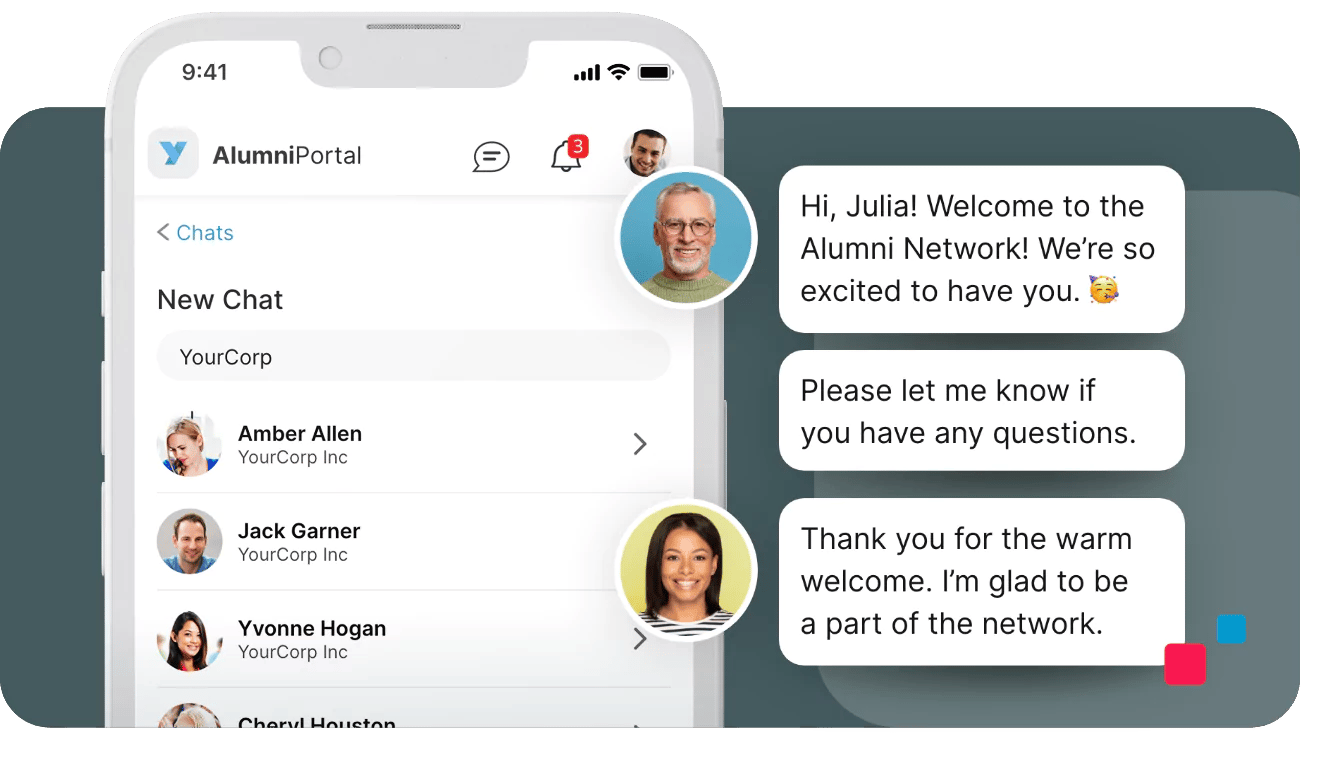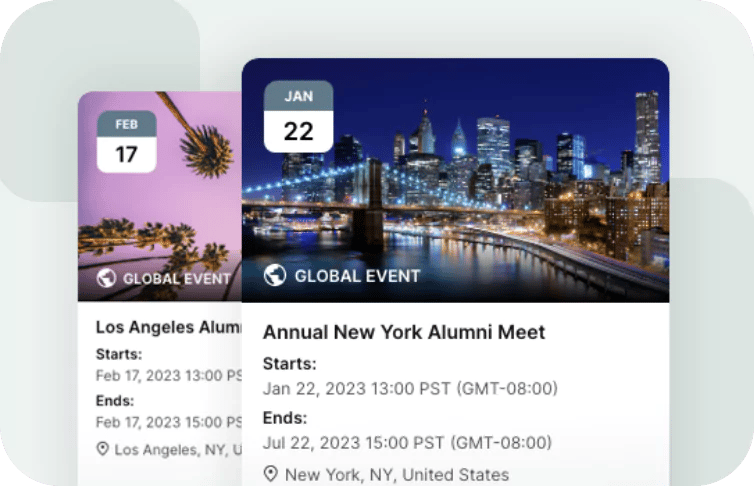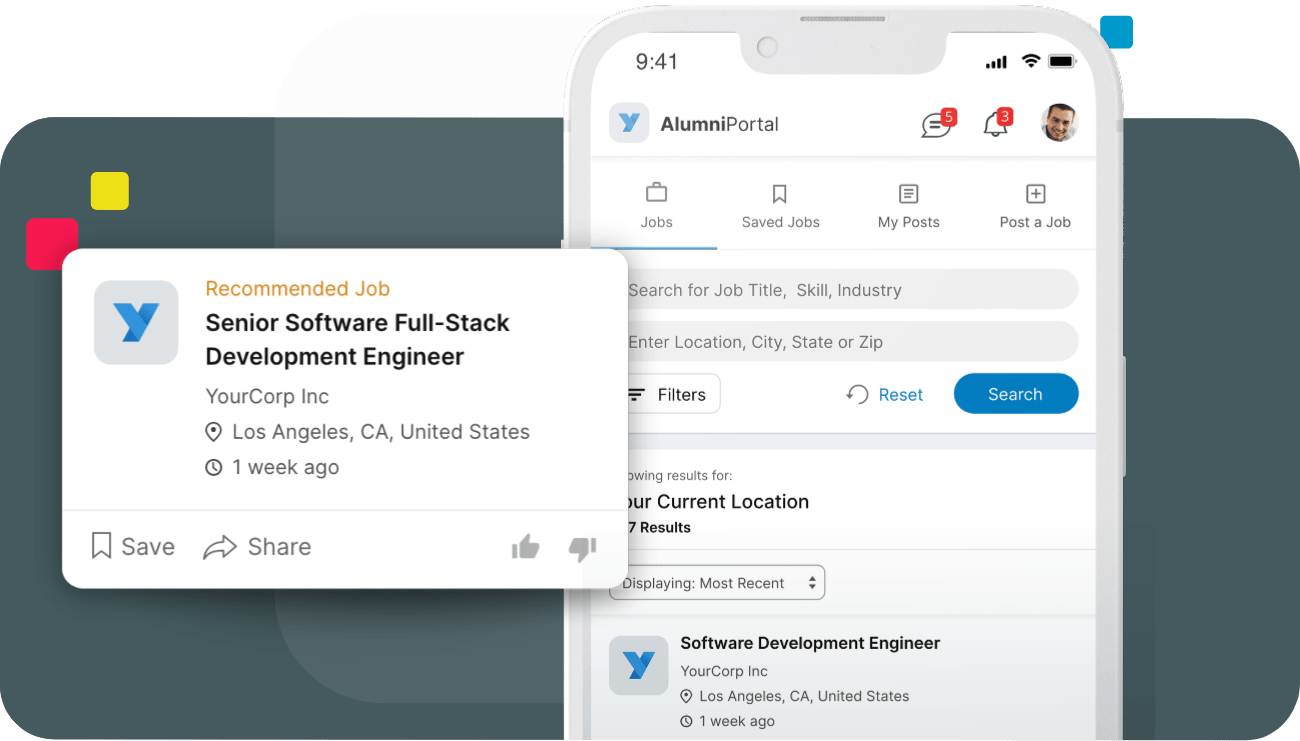University Alumni vs Corporate Alumni: What Enterprises Need to Know
Explore how corporate alumni differ from university alumni and why companies rely on alumni networks for recruiting, business development and...
Read more
We talk about the 7 steps it takes to drive value and opportunity for your business and corporate alumni.
Building an alumni network can seem like a mammoth undertaking, and you wouldn't necessarily be far wrong to think so. The type of corporate alumni community that drives value and opportunity does not spring up overnight. However, the effort to establish a network of this nature is worth its weight in gold.
Corporate alumni networks can generate as many as 17% of all new hires and boomerang hires see a 44% higher retention rate over 3 years than stranger-hires. These recruitment advantages in today's talent acquisition climate speak for themselves. And that’s not to mention the benefits of hiring someone who is already familiar with your company culture.
In short, it pays to keep in touch with ex-employees. The potential to be unlocked from your former employees is astounding. Here’s how you start.
Table of Contents
Apart from the obvious benefits of being able to expand your network and stay in touch with former colleagues, having an alumni network can be crucial for your business's success.
Think about corporate alumni programs as a giant network of people who are more familiar than most with your business and its products. Who better to keep engaged and informed about your company?
People like to buy from people they know. We’ve discovered that “83% of people in an alumni network would buy from their former employer" and that they are "45% more likely to do so than those outside of an alumni network”. Could you be losing loyal customers by not having a strategy in place to build lifelong relationships with current and former employees?
And then there are the HR benefits. Boomerang employees are becoming more and more common with the ever-changing job market. Lifelong employment is no longer the norm, which makes it more likely that a candidate will consider returning to a previous employer.
And there's the added benefit of improving your employer brand, by showing future employees you're prepared to continue to support their career growth post offboarding.
A corporate alumni program that can drive revenue and business opportunity does not materialize overnight, and the key to building such a network is through engagement. If you can master keeping alumni engaged you will quickly start seeing the benefits of investing in an alumni program.
To keep your alumni engaged we recommend incorporating these three things into your alumni strategy; Strong Communication, Engaging Events and Career Resources.
To drive engagement within your alumni program the first thing to consider is what channel you are going to use to communicate with and between your alumni. The easier it is to use; the more you will engage alumni.
Having a live chat feature which easily allows alumni to communicate and catch up with each other is another great example of strong communication enhancing your alumni experience.

Alumni events boost engagement as they offer alumni networking opportunities and an incentive to sign up. They can take place in person or virtually with people from all around the globe.
Both in person and virtual events have their pros and cons, and depending on the location and globality of your network you can decide which events best suit you.

Having an up to date, user friendly careers page allows your alumni to discover new opportunities, and to make use of and benefit from your programs resources.

Building a corporate alumni program can require input from many stakeholders in your organization, and you may hit a few speed bumps until it's up and running. These 7 steps are here to help you build a corporate alumni program without missing any of the small details.
Steps To Build A Corporate Alumni Network
Once you have your C-suite execs sold on the business case for an alumni network, you need to put the team together who will execute your program. In an ideal world, this will include a corporate alumni community manager (CMGR). Programs driven by a dedicated team have far higher levels of engagement as their focus is on building the network, not one departments goals.
Choosing the right alumni platform is more important than you might think. We've previously mentioned that for a networks success you need to be able to communicate effectively, and that is where using the right platform comes in. Ideally, you want an innovative platform that has been tailored to better manage and engage a growing alumni community.
Personalized dashboards and should be a must on your list. You can provide your former employees with tailored information designed for there needs. Think about it, your junior engineers don't want to be offered Senior Account Manager positions.
Advanced analytics are also a must for your alumni platform. The best way to boost engagement is through analyzing your communities behavior, and making data driven decisions based on how your alumni are engaging with your network. Bonus points if the system allows you to automate manual tasks and create automated workflows.
We've found that if the platform goes further to allow for alumni recruiting, event management, private messaging, and advanced search across all devices, you’re setting the stage for long-term engagement success.
Depending on your industry, your corporate alumni program can include retirees, current and former employees, new recruits, contingent workers, freelancers, contract and seasonal workers. Each of these groups forms a very important sub-section of your corporate alumni and will have different needs in terms of how they stand to benefit from your platform, how regularly they’d like to hear from you, and so forth.
It helps to create alumni personas that your team can reference whenever they need to tailor content or build a marketing strategy. When building personas consider what the business goal is for having them in your network. A retiree you might want to engage as a brand ambassador, vs. freelancers or contract workers who could be potential future recruits.
Then consider the type of content the different personas prefer (for example, video, templated, comparison case studies, product demos, etc.), as well as persona insights that explain how and where they live and operate in the ‘real world.’
Research to see if there is an existing alumni network – something that perhaps ex-employees have formed themselves. Reach out, introduce them to the formal program, invite them on board, and tell them about the benefits of joining.
When an employee leaves you, the offboarding process is the most effective way to introduce them to your alumni network. During exit interviews explain how your alumni program is designed to provide them with future career growth and support, and the added bonus of being able to communicate with fellow alumni and former colleagues easily.
Most businesses will spend hours (or even days) onboarding a new hire but consider the exit interview as a small box to be ticked and not much more. The reality is that it should be treated as an opportunity to pave the way for ongoing engagement with a company asset.
After all, you spend so much time training and inducting an employee; why would you let all that investment walk away without finding a way to stay in touch?
Evangelize your network to your employees from the moment they cross your threshold. Include information regarding your alumni community in your employee onboarding process.
Tell your new recruits about the network and how they can benefit from it while working for you, for example, by getting access to mentoring opportunities. But, place equal emphasis on what the network can do when they eventually seek greener pastures elsewhere – general networking, collaboration, boomerang hiring, and so on.
Then, keep at it. Be sure to regularly share information about alumni successes and ways in which the platform is benefitting its members, as well as the business. Keep it top of mind with your current employees and make it a regular talking point in your meetings, fireside chats, internal newsletter, and so on.
To ensure that your community becomes ever more engaged, you need to measure efforts and get feedback to determine the program’s efficacy. If you chose a platform with the right kind of functionality, a lot of this should be automated and gathered on your behalf. However, don’t underestimate the impact of a well-timed feedback survey.
In the end, the best way to figure out what your community wants and needs from you is simply to ask. Whether you choose to employ pulse surveys that keep tabs on overall network sentiment or want to go more in-depth with longer multiple-choice surveys, the trick lies in keeping the communication constant.
Building an alumni network takes time, but if you break it down into manageable steps it does not have to be an insurmountable task. Start by assembling the team who will be in charge of the program, and secure a suitable platform. Then work out who should join the network, and reach out to any informal factions. Update your exit strategy, market the alumni network, and don’t forget to measure success.
NEWSLETTER


Explore how corporate alumni differ from university alumni and why companies rely on alumni networks for recruiting, business development and...
Read moreDecember 9, 2025
Your focus should be on 'How' to launch a corporate alumni network, not 'If' - for its competitive advantage, insights and community building.
Read moreNovember 6, 2025
Wondering what an alumni is? Learn about how corporate alumni networks drive ROI, and why EnterpriseAlumni is the leading platform to build and...
Read moreOctober 21, 2025
Build new revenue streams, save on recruitment and enhance your employer brand, all through the power of alumni.